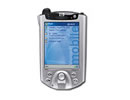'ZDNET Recommends': What exactly does it mean?
ZDNET's recommendations are based on many hours of testing, research, and comparison shopping. We gather data from the best available sources, including vendor and retailer listings as well as other relevant and independent reviews sites. And we pore over customer reviews to find out what matters to real people who already own and use the products and services we’re assessing.
When you click through from our site to a retailer and buy a product or service, we may earn affiliate commissions. This helps support our work, but does not affect what we cover or how, and it does not affect the price you pay. Neither ZDNET nor the author are compensated for these independent reviews. Indeed, we follow strict guidelines that ensure our editorial content is never influenced by advertisers.
ZDNET's editorial team writes on behalf of you, our reader. Our goal is to deliver the most accurate information and the most knowledgeable advice possible in order to help you make smarter buying decisions on tech gear and a wide array of products and services. Our editors thoroughly review and fact-check every article to ensure that our content meets the highest standards. If we have made an error or published misleading information, we will correct or clarify the article. If you see inaccuracies in our content, please report the mistake via this form.
HP iPAQ Pocket PC H5450


HP iPAQ Pocket PC H5450
pros and cons
- Powerful features
- supports USB charging
- bright, beautiful display.
- Pricey
- bulky.
With more and more manufacturers joining the Pocket PC ranks, it's been getting harder for HP to differentiate itself. But the intense competition seems to have galvanised the company, which has now released the breathtakingly powerful H5450, a handheld that offers integrated Bluetooth, Wi-Fi and biometric functions.
Design
In terms of appearance, the H5450 isn't very much different from its 3900 series brethren. In other words, it's a hefty handheld, weighing 206g and measuring 1.6cm in thickness. The H5450 is again wrapped in the recognisable, robust silver-black frame. An antenna at the top left shows that it's a connected handheld, while a horizontal strip below the directional pad holds the fingerprint scanner. The SD card slot sits in its customary place at the top.
However, the oval directional pad of the H3970 has been shrunk to a 12mm-wide round button. This tiny key makes it harder to control games, but thankfully, multiple key presses and diagonal movements are still supported. Although there are new volume control buttons along the side of the device, we would have preferred a side-scroller for reading.
Features
A handheld, being a personal device, is often used to store confidential information. Therefore some security may be necessary to prevent unauthorised access. Although the Pocket PC operating system has a built-in alphanumeric lock, the H5450 goes one step further with a fingerprint reader.
By swiping a finger vertically across the fingerprint scanner, you can authenticate yourself in order to gain software access to the handheld. When testing, we initially experienced difficulties getting the H5450 to recognise an index finger, but switching to a thumb seemed to do the trick -- perhaps due to the larger surface area of that particular digit. The H5450 proved to be highly accurate in detecting fingerprints, and in most cases required only a single swipe for successful recognition.
The H5450 allows different permutations of biometric and alphanumeric security. For instance, you can set the device so it provides access either when the correct four-digit number is entered or the correct finger is swiped. You can also configure the handheld to accept prints from different fingers, which is useful in case you injure your key identification finger.
The H5450 comes with a number of headline-grabbing features, yet HP pays just as much attention to the finer details. For example, consumers have been buying third-party dual-function cables that recharge and synchronise at the same time. The H5450 now officially supports this function. Just by checking a box in the software menu, you can tell the handheld to draw power from your PC or notebook's USB port. This makes it more convenient for jet-setting users as it means one less power cable to lose.
At the same time, the H5450 now sports a vibrating alarm, which is excellent if you need to be discreet. This may also come in useful if the H5450 subsequently acquires cellphone functions. Can the H5450 be turned into a cell phone? That's an interesting question. If you remove the replaceable battery of the H5450, you'll find a SIM card slot at the back of the device. According to HP, this slot may eventually be leveraged for future technologies, although nothing's confirmed at the moment.
The H5450 also comes with HP's useful suite of utilities for backing up data, managing programs and viewing images, among others. There's also Nevo, a nifty piece of software that transforms your iPAQ into a remote controller.
Performance
The H5450, which runs on a 400MHz PXA250 XScale processor, has 64MB of built-in memory and 48MB of ROM. However this high specification did not translate into a discernible performance advantage. Despite the presence of a MediaQ graphics controller, high-bitrate video clips still stuttered.
Over the years, the iPAQ line has offered some of the best screens in the business. The H5450 is no different, with its large and sharp 65,536-colour, transflective display. The device is well-lit even with brightness set at 50 per cent. Another mainstay, the integrated Bluetooth, worked as expected, and we easily transferred data between other Bluetooth-enabled handhelds and cellphones.
We also had no problems configuring the H5450 for our office's wireless network. We keyed in the SSID (service set identifier) and encryption key, reset the handheld, and started surfing immediately. The device's wireless LAN software comes with a helpful chart for users to find the areas with the strongest signals.
Battery life is decent, but not great. With Bluetooth and Wi-Fi turned off and screen brightness set at 50 percent, the 1,250mAh Lithium-polymer cell delivered 2 hours and 43 minutes of MP3s. If that's not enough, iPAQ users now have the option of replacing the existing battery with a higher-capacity one.
Conclusion
At a time when manufacturers are rolling out budget handhelds, the H5450 seems expensive with its £527.57 (inc. VAT) price tag. However, it's far more than a pricey geek toy. In fact, the H5450 is one of the most powerful and most cannily focused handhelds we've seen so far. With important security and connectivity features, this iPAQ is set to become a darling of corporate users -- especially if HP delivers a GPRS add-on.